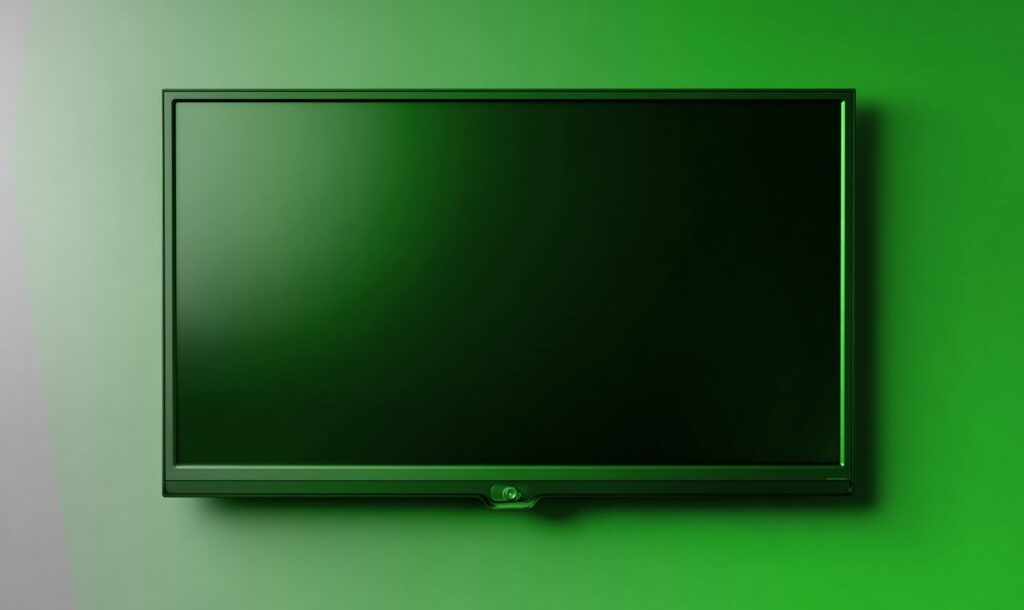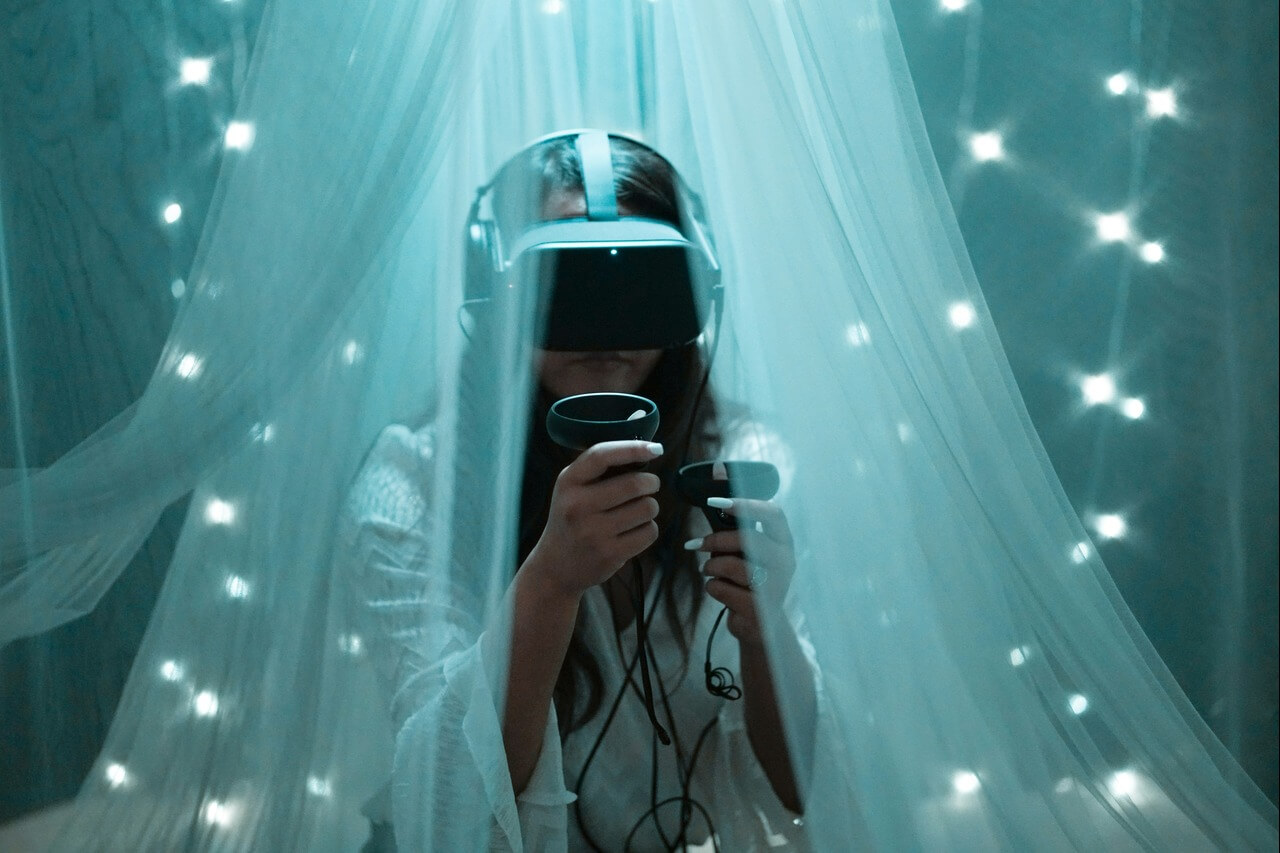Virtual Reality (VR) has revolutionized the way people experience digital content. But a looming question persists—” Does VR hurt your eyes?”
Understanding the Basics
Virtual Reality (VR) is an immersive technology that uses specialized hardware including a headset and motion sensors to create a simulated three-dimensional environment. The headset with screens for each eye displays images or videos, providing a stereoscopic 3D effect.
Users interact with the virtual space through controllers or gloves with sensors and the system tracks their movement using external sensors or cameras. Powerful computers process graphics and simulations, ensuring a seamless and responsive experience.
Spatial audio enhances immersion by adapting to the user’s position. VR experiences, ranging from games to educational content are created through specialized software. Ultimately, VR aims to transport users into a digitally crafted environment, engaging multiple senses to create a convincing sense of presence and interaction.
Does VR Hurt Your Eyes?
VR can have various effects on the eyes. However, it’s essential to note that most of these are temporary and often related to prolonged or improper use. Here are some potential impacts:
- Eye strain: Extended use of VR can lead to eye strain due to the intense focus required on the screens inside the headset. This may cause discomfort and fatigue.
- Dry eyes: Users may experience dry eyes as they often forget to blink frequently during intense VR sessions. Blinking helps moisten the eyes— neglecting this natural process can lead to dryness.
- Motion sickness: Some users may encounter motion sickness or nausea, commonly known as “VR motion sickness.” This occurs when there’s a discrepancy between what the eyes see in the virtual environment and what the body senses in the physical world.
- Accommodation and vergence issues: The eyes usually adjust focus and alignment based on the distance of objects. VR can challenge this natural coordination, potentially leading to discomfort or visual disturbances.
- Blue light exposure: VR headsets emit blue light like other digital screens. If used close to bedtime, prolonged exposure to blue light may contribute to eye strain and disrupt sleep patterns.
- Preexisting conditions: Individuals with preexisting eye conditions such as amblyopia or strabismus may find that VR exacerbates their visual challenges.
Is Virtual Reality Safe For Children?
Using VR headsets for children requires careful consideration due to their ongoing physical development. The impact of prolonged VR use on visual and neurological systems and potential issues related to interpupillary distance and motion sickness raise concerns.
Parents should choose age-appropriate content, ensure proper headset fit and supervise children during VR sessions. Time limits and breaks are advisable to address potential discomfort or side effects.
While VR can offer exciting experiences, responsible use and staying informed about manufacturer guidelines and expert recommendations are essential for ensuring the safety of children engaging with this technology.
VR Eye Benefits
While there are considerations and potential effects to be aware of, Virtual Reality can also offer certain eye health benefits:
- Eye exercises: Some VR applications incorporate eye-tracking technology and activities designed to promote eye movement, coordination and focus—potentially contributing to improved visual abilities.
- Vision therapy: VR has shown promise as a tool for vision therapy. It can be used in a controlled environment to aid individuals with certain visual conditions such as amblyopia or convergence insufficiency under the guidance of eye care professionals.
- Depth perception enhancement: The immersive nature of VR can provide experiences that enhance depth perception and spatial awareness—potentially benefiting users in developing and maintaining these visual skills.
- Stress reduction: Virtual environments designed for relaxation and stress reduction can indirectly contribute to eye health. Reduced stress levels positively impact overall well-being, including ocular comfort.
- Educational visual experiences: VR can be utilized in educational settings to create engaging and interactive visual experiences. This could encourage active learning and visual exploration, benefitting aspects of visual cognition.
Playing Virtual Reality
The recommended duration for playing Virtual Reality varies but generally, it’s advised to follow the 20-20-20 rule. Take a 20-second break every 20 minutes, focusing on something 20 feet away.
Prolonged use of VR without breaks can lead to eye strain and discomfort. Additionally, following the specific guidelines the VR headset manufacturer provides is crucial.
Some suggest limiting sessions to 30 minutes to an hour, especially for beginners and gradually increasing the duration as you become more comfortable. It’s essential to listen to your body and take breaks whenever you feel discomfort or fatigue.
Regular breaks benefit your eyes, help prevent motion sickness and maintain overall well-being during VR experiences.
Protecting Your Eyes
Protecting your eyes when using Virtual Reality ensures a comfortable and safe experience. Here are some tips:
- Follow usage guidelines: Adhere to the recommended usage guidelines provided by the VR headset manufacturer. This includes taking breaks during extended use to prevent eye strain.
- Choose age-appropriate content: Ensure the content suits your age and comfort level. Some experiences may be intense or not suitable for specific age groups.
- Adjust interpupillary distance (IPD): Set interpupillary distance (distance between your eyes) on the headset to match your own. This helps ensure a clear and comfortable view.
- Ensure proper fit: Wear the headset securely but not too tightly. A proper fit helps maintain comfort during use and prevents unnecessary pressure on your face.
- Good lighting conditions: Use it in a well-lit room to reduce eye strain. Avoid excessively bright or dim lighting as it can impact the comfort of your eyes during VR experiences.
- Take regular breaks: Give your eyes a break by pausing during extended sessions. Follow the 20-20-20 rule.
- Blink frequently: Remember to blink regularly even in the immersive world of VR. Blinking helps prevent dry eyes and maintains eye moisture.
- Limit motion intensity: If you’re prone to motion sickness, choose VR experiences with lower motion intensity. Gradually increase exposure to more intense experiences as you become accustomed.
- Adjust display settings: Optimize the display settings of the headset such as brightness and contrast to reduce eye strain. Experiment with these settings to find what works best for you.
- Consult an eye care professional: If you experience persistent discomfort or have preexisting eye conditions, consult an eye care professional. They can provide personalized advice based on your specific needs.
Does VR Hurt Your Eyes?
Are you still wondering, “Does VR hurt your eyes?” Well, it’s not bad by itself.
The key is to use it responsibly and be aware of your own needs. Pay attention to how you use it, take breaks and make smart choices.
This way, you can have fun with VR without worrying about your eyes. Remember to keep an eye on your well-being while enjoying the extraordinary digital experiences.
Recent Stories
Follow Us On
Get the latest tech stories and news in seconds!
Sign up for our newsletter below to receive updates about technology trends




